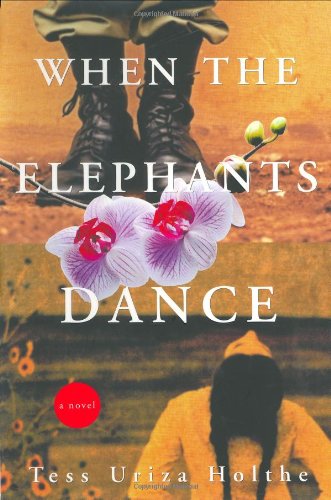When the Elephants Dance
After the Japanese attack on Pearl Harbor in December 1941, American and Allied troops retreated from the Philippine Islands, which were first bombed and then occupied by the Japanese Imperial Army. The Filipino people suffered as the Japanese Army commandeered housing and food, closed schools and destroyed schoolbooks. In October 1944, General Douglas MacArthur kept his promise to return to the Philippines and battled through to Manila with four Allied divisions.
As the Americans and Japanese fight for possession of Manila from February 3 to March 3, 1945, Alejandro Karangalan, his family, and a group of neighbors hide in the cellar of their home to avoid bombings, sneaking out only to search for food or medicine. Each time, they risk capture, torture, and death. To feed their courage, maintain their hope, and forget the devastation of their city and homes, the people tell stories. The three principal narrators, Alejandro, his sister Isabelle, and the guerrilla fighter Domingo, tell of their experiences in and around Manila during the siege. Interspersed with these narratives, the other neighbors recount allegorical tales of their own pasts and of Filipino folklore. Some of the tales are long, but the people are huddled together in the cellar for days at a time–their spirits are fed on the stories although their bodies are starved for food.
Holthe’s language is lyrical in its evocation of the culture and mystique of the Philippines. Although fiction, parts of the novel are based on real events, and the characters are fully dimensional. In her first book, Holthe tells the story of a people of great resilience and courage who have previously received little literary attention.










